FORUM › Forums › Software › CLS2SIM Software › Trim in the PMDG NGX
- This topic has 31 replies, 4 voices, and was last updated 7 years, 5 months ago by
 Diego Bürgin.
Diego Bürgin.
-
AuthorPosts
-
14/08/2017 at 12:07 #497
 Diego BürginKeymaster
Diego BürginKeymasterHi everyone
Good news!
I was finally able to reproduce the behaviour, so now I can start fixing it.
Big thanks to webmaximus for the detailed video!
Also, thanks to jovabra for the info about stab trim.I’ll be back as soon as possible with an update.
Regards
Diego14/08/2017 at 13:02 #498 webmaximusParticipant
webmaximusParticipantThat’s great news Diego, happy to hear the video was of use to you.
18/08/2017 at 15:06 #519 webmaximusParticipant
webmaximusParticipantOne more thing I would like to add while you’re looking into this issue is to also have a look at the stab trim. I think it was already mentioned but I still want to mention it again since it would be really great if this could also be fixed somehow in an upcoming update.
With HW trim disabled, the ELEC HYD pumps ON and a “neutral” stab trim value of 5 units set in the NGX both the physical as well as the yoke in the virtual cockpit will move back/pitch up to a large extent. This is also reflected if you look at the flight controls on the SYS page on the lower CDU in the NGX.
In the same situation but with HW trim enabled this doesn’t happen which is the correct behavior since the stab trim value should only affect the stabilizer and not the elevator in a 737. This since the elevator and stabilizer are two separated parts independent of each other. With HW enabled the yoke stays in a perfectly centered position along the pitch axis again reflected both looking at the physical yoke, the yoke in the virtual cockpit as well as looking at the flight controls on the SYS page on the lower CDU.
A bit hard to describe but please ask if I need to clarify the issue or if you need any additional details.
If you’re able to address the first issue allowing us to use HW trim that will also sort this issue since it’s only seen with HW trim disabled. However the downside using HW trim in its current form and how it’s implemented is you’ll not be able to affect the stab trim value in the NGX which again isn’t realistic. When you use the trim buttons you should of course also see how the stab trim value and the stab trim wheel in the NGX is affected.
I think I heard/read somewhere though this is not possible and if that’s the case there’s not much to do. Then we just need to figure out what would be the best and most realistic way in the NGX…to have HW trim enabled or disabled.
Another “solution” of course would be if you were able to sort the issue described above so we could keep HW trim disabled but still have the yoke correctly centered and not affected by changing the stab trim value.
I’m not sure if we have any real world 737 NG drivers in here but would be really awesome to have that kind of input to help finding the most realistic compromise when using the CLS-E yoke with the PMDG NGX.
18/08/2017 at 19:03 #521jovabra
ParticipantWebmaximus
Try my 737 profile. Name: test 737 John v Braam
Regards18/08/2017 at 19:43 #522 webmaximusParticipant
webmaximusParticipantHi John,
Would be nice to have some details about your profile before I try it out.
18/08/2017 at 20:06 #523jovabra
ParticipantWebmaximus,
You can downloaded with the option in the CLS2sim software V4.2, the profile manager and hit the profile cloud button. You can find a lot of
profile and also the one a create. I made some adjustments so the trim for the 737 is now correct and a added a little “neutral” feeling for the roll/pitch yaw
control.
If you like it, keep it and if you don’t like it throw it away. Somebody has give it a 5 star ranking, so they like it.
Regards John18/08/2017 at 20:54 #524 webmaximusParticipant
webmaximusParticipantThanks John!
I’m aware of the cloud and how to download a profile and I did find the description for your profile. I was more interested in what exactly you did when you say you made some adjustments so the trim is now correct considering there’s a confirmed bug when using HW trim while software trim doesn’t work the way it should with the NGX and again due to technical issues.
So for this reason I’m really interested in what exactly you did to sort this with the settings available via a profile but will download your profile and have a look and compare it to my own profile also available in the cloud.
Richard
18/08/2017 at 21:33 #525 webmaximusParticipant
webmaximusParticipantJust checked your profile out John and realized your brilliant way to overcome the issue with the stab trim not only affecting the stabilizer but also the elevator by simply disabling the pitch axis under the trim tab in CLS2Sim 🙂
Looking at some of the other differences between our profiles I prefer the values I’m using.
These include the small deadzone you added for the roll axis where I don’t have this since my experience comparing to the full motion 737 level D sims I’ve tried out is no such deadzone exist.
I also noticed how you don’t have the stick shaker enabled meaning it won’t be activated in a stall situation. Any particular reason you decided to disable that?
As for percent of way used by autopilot I’m using slightly higher values compared to you (350 for both axes) since I found lower values resulted in the physical yoke not moving correctly compared to the yoke in the v/c.
Finally I use higher values for the hydraulic force (300 for both pitch and roll) and again trying to mimic the feel of the actual yoke in a full motion level D sim. I also have the ‘Use hydraulic system integrity data’ checked but I honestly don’t know what difference it makes having it enabled/disabled.
Thanks again for the great tip and I also updated my profile with this work-around and credited your name in the description of the profile.
18/08/2017 at 22:09 #526jovabra
ParticipantWebmaximus,
My experiency in a level D sim (767 and 747) is to long ago to get the real feelings in my hand 🙁I did not create a deadzone for the control wheel but only a sort of “zero feel”. I will look up for a roll centring feel in the maintenace manual.
No special reason to deactivate the stickshaker.
For the forces on the control wheel i have this information for you. It is from the original 737-800 maintenance manual
At this moment i did not checked the force on my system. You can use it so you can find the best force. You see it had nothing to do with speed.
Only the elevator is speed depended. I must figured out the elevator/rudder force in the maintenace manual but this only valid with 0 speed due to the ground testI have some information from an former colleague and he send me the
the original 737 Aircraft Maintenance Manual.
This is a part of it about the force setting.
If you want more specified information pls let me knowE. Do a Test of the Control Wheel Force
SUBTASK 27-11-00-730-002
(1) Do a check of the control wheel force:
(a) Set the indicator on the control column assembly protractor, to zero degrees.
(b) Turn the control wheel clockwise until the aileron starts to move.
1) Make sure the force to turn the control wheel is not more than 29.0 pound-inches
(3.2 newton-meters) or 4.5 pounds (20.0 newtons).
(c) Continue to turn the control wheel clockwise to 5 degrees.
1) Make sure the force to turn the control wheel is not more than 35.5 pound-inches
(4.0 newton-meters) or 5.5 pounds (24.4 newtons).
(d) Continue to turn the control wheel clockwise to 20 degrees.
1) Make sure the force to turn the control wheel is not more than 56.0 pound-inches
(6.3 newton-meters) or 8.5 pounds (37.8 newtons).
(e) Continue to turn the control wheel clockwise to 40 degrees.
1) Make sure the force to turn the control wheel is not more than 89.5 pound-inches
(10.1 newton-meters) or 14.0 pounds (62.2 newtons).
(f) Continue to turn the control wheel clockwise to 75 degrees.
1) Make sure the force to turn the control wheel is not more than 123.5 pound-inches
(13.9 newton-meters) or 19.0 pounds (84.5 newtons).
(g) Release the control wheel.
1) Make sure the control wheel goes back to the neutral position.
(h) Turn the control wheel counterclockwise until the aileron starts to move.
1) Make sure the force to turn the control wheel is not more than 29.0 pound-inches
(3.2 newton-meters) or 4.5 pounds (20.0 newtons).
(i) Continue to turn the control wheel counterclockwise to 5 degrees.
1) Make sure the force to turn the control wheel is not more than 35.5 pound-inches
(4.0 newton-meters) or 5.5 pounds (24.4 newtons).
(j) Continue to turn the control wheel counterclockwise to 20 degrees.
1) Make sure the force to turn the control wheel is not more than 56.0 pound-inches
(6.3 newton-meters) or 8.5 pounds (37.8 newtons).
(k) Continue to turn the control wheel counterclockwise to 40 degrees.
1) Make sure the force to turn the control wheel is not more than 89.5 pound-inches
(10.1 newton-meters) or 14.0 pounds (62.2 newtons).
(l) Continue to turn the control wheel counterclockwise to 75 degrees.
1) Make sure the force to turn the control wheel is not more than 123.5 pound-inches
(13.9 newton-meters) or 19.0 pounds (84.5 newtons).Regards
John18/08/2017 at 23:30 #527 webmaximusParticipant
webmaximusParticipantWow, thanks a lot John for all this information!
As for the work-around discussed above disabling trim for the pitch axis to solve the issue in the NGX where moving the stab trim will also affect the deflection of the elevator I realized I’m not sure if this really is a work-around. This since disabling trim for the pitch axis of course also means you will no longer be able to feel if the aircraft is correctly trimmed or not but rather it will always be centered requiring the same amount of force to be moved along the pitch axis regardless of the stab trim value.
Or maybe I’m just tired not thinking straight 🙂
Will do some testing tomorrow.
18/08/2017 at 23:54 #528 webmaximusParticipant
webmaximusParticipant…and just gave this yet another thought and I now take back what I said in my previous post…I think 😉
I guess if the NGX is not correctly trimmed meaning you’ll have to apply manual force to keep the aircraft’s current pitch that also means when you change the stab trim value in the NGX using the buttons assigned or the trim wheel itself in the v/c that of course also means you no longer will have to apply any manual force as soon as you reached a trimmed out condition. This way it will physically feel like you’re trimming the aircraft even when pitch trim is disabled in CLS2Sim.
Sorry for sounding so confused and thinking aloud 😀
24/08/2017 at 19:26 #542 webmaximusParticipant
webmaximusParticipantDisabling trim for the pitch axis as suggested by John kind of solves the issue but I still have another issue.
When disconnecting the A/P on short final the aircraft tends to always pitch up quite hard meaning I must be prepared to apply forward pressure to avoid “balooning”.
As far as I know the A/P should normally continuously keep the aircraft in trim while engaged meaning you shouldn’t end up in the situation I describe here when disconnecting the A/P.
Anyone else experienced this?
25/08/2017 at 15:30 #543 webmaximusParticipant
webmaximusParticipantWas able to also solve the issue with the aircraft pitching up on A/P disconnect by resetting ‘way used by a/p’ for the pitch axis back to the default value of 100.
26/09/2017 at 17:41 #580jackz
ParticipantDear Diego
You probably know that contrary to General Aviation airplanes, on nearly every commercial airplane be it Jet or prop, the control forces are (thankfully) completely irreversible.
The forces are so heavy they couldn’t be overcome by hand and the plane would be unflyable. The hydraulics are set in a way that the forces applied to the control surfaces (such as the weight of rudder) are no longer transmitted to the pilot.So there is an artificial feedback force applied on the Yoke which is part of the JAR25/EASA Certification, including Stick shaker and stick pusher features if needed.
Here’s an excerpt of the JAR 25 certifcation requirements stating the forces to be applied on large aircrafts (see page 16).
CONTROLLABILITY
AND
MANOEUVRABILITY
http://www.southampton.ac.uk/~jps7/Aircraft%20Design%20Resources/Certification%20safety%20reliability/jar%2025%20large%20aircraft.pdfbest regards
Jacques
26/09/2017 at 17:48 #582jackz
Participantand here’s the complement (ACJ) of the JAR 25.143 Load factor for large aircrafts
ACJ No. 2 to JAR 25.143(f)
Controllability and Manoeuvrability (Interpretative Material)
See JAR 25.143(f)
See Orange Paper Amendment 96/1
1 The aircraft will be considered to have been overstressed if limit strength has been exceeded in any critical component. For the purpose of this ACJ, limit strength is defined as the minimum demonstrated strength against the relevant manoeuvre load condition divided by 1·5.
2 Minimum Stick Force to Reach Limit Strength
2.1 The stick force necessary to reach limit strength in steady manoeuvre or wind up turns should not be less than 50 pounds, except that if severe buffeting occurs before the limit strength condition is reached a somewhat lower stick force may be acceptable. This minimum stick force applies in the en-route configuration with the aeroplane trimmed for straight flight, at all speeds from the minimum speed at which the limit strength condition can be achieved without stalling. No minimum stick force is specified for other configurations, but the requirements of JAR 25.143(f) are applicable in these conditions.
2.2 The acceptability of a stick force of less than 50 pounds at the limit strength condition will depend upon the intensity of the buffet, the adequacy of the warning margin (i.e. the load factor increment between buffet onset and the limit strength condition) and also on the acceptability of any associated non-linearities of the stick force characteristics.
3 Stick Force Characteristics
3.1 At all points within the buffet onset boundary determined in accordance with JAR 25.251 (e), but not including speeds above VMO/MMO (see JAR 25.253(a)(3)), the stick force should increase progressively with increasing load factor. Any reduction in stick force gradient with change of load factor should not be so large or abrupt as to impair significantly the ability of the pilot to maintain precise control over the load factor and pitch attitude of the aeroplane.
3.2 Beyond the buffet onset boundary hazardous stick force characteristics should not be encountered within the permitted manoeuvring envelope without adequate prior warning being given by severe buffeting or high stick forces. It should at all times be possible, by use of the primary longitudinal control alone, to pitch the aeroplane rapidly nose down so as to regain the initial trimmed conditions. The stick force characteristics demonstrated should comply with the following:
a. For normal acceleration increments of up to 0·3 g beyond buffet onset, where these can be achieved, the ability to control pitch attitude and load factor with precision should be retained. Local reversal of the stick force gradient within this range of load factor will be acceptable provided that any tendency to pitch up is mild and easily controllable.
b. For normal acceleration increments of more than 0·3 g beyond buffet onset, where these can be achieved, more marked reversals of the stick force gradient may be acceptable. It should be possible for any tendency to pitch up to be contained within the allowable manoeuvring limits without applying push forces to the control column and without making large and rapid forward movement of the control column.
[ 3.3 In flight tests to satisfy paragraph 3.1 and 3.2 the load factor should be increased until either – ]
a. The level of buffet becomes sufficient to provide an obvious warning to the pilot which is a strong deterrent to further application of load factor; or
b. Further increase of load factor requires a stick force in excess of 150 pounds (or in excess of 100 pounds when beyond the buffet onset boundary) or is impossible because of the limitations of the control system; or
c. The positive limit manoeuvring load factor established in compliance with JAR 25.337(b) is achieved.hope this helps
Jacques -
AuthorPosts
- You must be logged in to reply to this topic.

